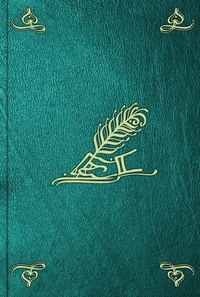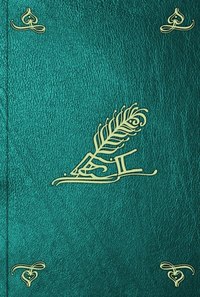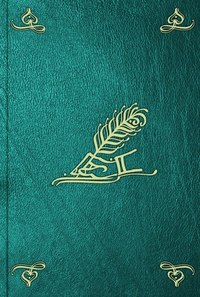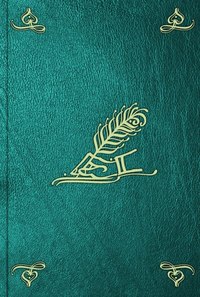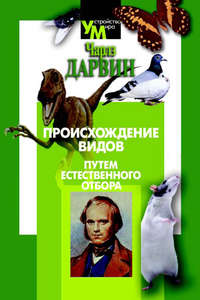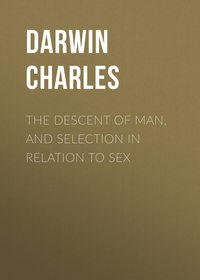 полная версия
полная версияПолная версия
The Expression of the Emotions in Man and Animals
The nature of the relation between the involuntary and energetic contraction of the muscles round the eyes, and the secretion of tears, cannot be positively ascertained, but a probable view may be suggested. The primary function of the secretion of tears, together with some mucus, is to lubricate the surface of the eye; and a secondary one, as some believe, is to keep the nostrils damp, so that the inhaled air may be moist,[621] and likewise to favour the power of smelling. But another, and at least equally important function of tears, is to wash out particles of dust or other minute objects which may get into the eyes. That this is of great importance is clear from the cases in which the cornea has been rendered opaque through inflammation, caused by particles of dust not being removed, in consequence of the eye and eyelid becoming immovable.[622] The secretion of tears from the irritation of any foreign body in the eye is a reflex action; – that is, the body irritates a peripheral nerve which sends an impression to certain sensory nerve-cells; these transmit an influence to other cells, and these again to the lacrymal glands. The influence transmitted to these glands causes, as there is good reason to believe, the relaxation of the muscular coats of the smaller arteries; this allows more blood to permeate the glandular tissue, and this induces a free secretion of tears. When the small arteries of the face, including those of the retina, are relaxed under very different circumstances, namely, during an intense blush, the lacrymal glands are sometimes affected in a like manner, for the eyes become suffused with tears.
It is difficult to conjecture how many reflex actions have originated, but, in relation to the present case of the affection of the lacrymal glands through irritation of the surface of the eye, it may be worth remarking that, as soon as some primordial form became semi-terrestrial in its habits, and was liable to get particles of dust into its eyes, if these were not washed out they would cause much irritation; and on the principle of the radiation of nerve-force to adjoining nerve-cells, the lacrymal glands would be stimulated to secretion. As this would often recur, and as nerve-force readily passes along accustomed channels, a slight irritation would ultimately suffice to cause a free secretion of tears.
As soon as by this, or by some other means, a reflex action of this nature had been established and rendered easy, other stimulants applied to the surface of the eye – such as a cold wind, slow inflammatory action, or a blow on the eyelids – would cause a copious secretion of tears, as we know to be the case. The glands are also excited into action through the irritation of adjoining parts. Thus when the nostrils are irritated by pungent vapours, though the eyelids may be kept firmly closed, tears are copiously secreted; and this likewise follows from a blow on the nose, for instance from a boxing-glove. A stinging switch on the face produces, as I have seen, the same effect. In these latter cases the secretion of tears is an incidental result, and of no direct service. As all these parts of the face, including the lacrymal glands, are supplied with branches of the same nerve, namely, the fifth, it is in some degree intelligible that the effects of the excitement of any one branch should spread to the nerve-cells or roots of the other branches.
The internal parts of the eye likewise act, under certain conditions, in a reflex manner on the lacrymal glands. The following statements have been kindly communicated to me by Mr. Bowman; but the subject is a very intricate one, as all the parts of the eye are so intimately related together, and are so sensitive to various stimulants. A strong light acting on the retina, when in a normal condition, has very little tendency to cause lacrymation; but with unhealthy children having small, old-standing ulcers on the cornea, the retina becomes excessively sensitive to light, and exposure even to common daylight causes forcible and sustained closure of the lids, and a profuse flow of tears. When persons who ought to begin the use of convex glasses habitually strain the waning power of accommodation, an undue secretion of tears very often follows, and the retina is liable to become unduly sensitive to light. In general, morbid affections of the surface of the eye, and of the ciliary structures concerned in the accommodative act, are prone to be accompanied with excessive secretion of tears. Hardness of the eyeball, not rising to inflammation, but implying a want of balance between the fluids poured out and again taken up by the intra-ocular vessels, is not usually attended with any lacrymation. When the balance is on the other side, and the eye becomes too soft, there is a greater tendency to lacrymation. Finally, there are numerous morbid states and structural alterations of the eyes, and even terrible inflammations, which may be attended with little or no secretion of tears.
It also deserves notice, as indirectly bearing on our subject, that the eye and adjoining parts are subject to an extraordinary number of reflex and associated movements, sensations, and actions, besides those relating to the lacrymal glands. When a bright light strikes the retina of one eye alone, the iris contracts, but the iris of the other eye moves after a measurable interval of time. The iris likewise moves in accommodation to near or distant vision, and when the two eyes are made to converge.[623] Every one knows how irresistibly the eyebrows are drawn down under an intensely bright light. The eyelids also involuntarily wink when an object is moved near the eyes, or a sound is suddenly heard. The well-known case of a bright light causing some persons to sneeze is even more curious; for nerve-force here radiates from certain nerve-cells in connection with the retina, to the sensory nerve-cells of the nose, causing it to tickle; and from these, to the cells which command the various respiratory muscles (the orbiculars included) which expel the air in so peculiar a manner that it rushes through the nostrils alone.
To return to our point: why are tears secreted during a screaming-fit or other violent expiratory efforts? As a slight blow on the eyelids causes a copious secretion of tears, it is at least possible that the spasmodic contraction of the eyelids, by pressing strongly on the eyeball, should in a similar manner cause some secretion. This seems possible, although the voluntary contraction of the same muscles does not produce any such effect. We know that a man cannot voluntarily sneeze or cough with nearly the same force as he does automatically; and so it is with the contraction of the orbicular muscles: Sir C. Bell experimented on them, and found that by suddenly and forcibly closing the eyelids in the dark, sparks of light are seen, like those caused by tapping the eyelids with the fingers; "but in sneezing the compression is both more rapid and more forcible, and the sparks are more brilliant." That these sparks are due to the contraction of the eyelids is clear, because if they "are held open during the act of sneezing, no sensation of light will be experienced." In the peculiar cases referred to by Professor Donders and Mr. Bowman, we have seen that some weeks after the eye has been very slightly injured, spasmodic contractions of the eyelids ensue, and these are accompanied by a profuse flow of tears. In the act of yawning, the tears are apparently due solely to the spasmodic contraction of the muscles round the eyes. Notwithstanding these latter cases, it seems hardly credible that the pressure of the eyelids on the surface of the eye, although effected spasmodically and therefore with much greater force than can be done voluntarily, should be sufficient to cause by reflex action the secretion of tears in the many cases in which this occurs during violent expiratory efforts.
Another cause may come conjointly into play. We have seen that the internal parts of the eye, under certain conditions act in a reflex manner on the lacrymal glands. We know that during violent expiratory efforts the pressure of the arterial blood within the vessels of the eye is increased, and that the return of the venous blood is impeded. It seems, therefore, not improbable that the distension of the ocular vessels, thus induced, might act by reflection on the lacrymal glands – the effects due to the spasmodic pressure of the eyelids on the surface of the eye being thus increased.
In considering how far this view is probable, we should bear in mind that the eyes of infants have been acted on in this double manner during numberless generations, whenever they have screamed; and on the principle of nerve-force readily passing along accustomed channels, even a moderate compression of the eyeballs and a moderate distension of the ocular vessels would ultimately come, through habit, to act on the glands. We have an analogous case in the orbicular muscles being almost always contracted in some slight degree, even during a gentle crying-fit, when there can be no distension of the vessels and no uncomfortable sensation excited within the eyes.
Moreover, when complex actions or movements have long been performed in strict association together, and these are from any cause at first voluntarily and afterwards habitually checked, then if the proper exciting conditions occur, any part of the action or movement which is least under the control of the will, will often still be involuntarily performed. The secretion by a gland is remarkably free from the influence of the will; therefore, when with the advancing age of the individual, or with the advancing culture of the race, the habit of crying out or screaming is restrained, and there is consequently no distension of the blood-vessels of the eye, it may nevertheless well happen that tears should still be secreted. We may see, as lately remarked, the muscles round the eyes of a person who reads a pathetic story, twitching or trembling in so slight a degree as hardly to be detected. In this case there has been no screaming and no distension of the blood-vessels, yet through habit certain nerve-cells send a small amount of nerve-force to the cells commanding the muscles round the eyes; and they likewise send some to the cells commanding the lacrymal glands, for the eyes often become at the same time just moistened with tears. If the twitching of the muscles round the eyes and the secretion of tears had been completely prevented, nevertheless it is almost certain that there would have been some tendency to transmit nerve-force in these same directions; and as the lacrymal glands are remarkably free from the control of the will, they would be eminently liable still to act, thus betraying, though there were no other outward signs, the pathetic thoughts which were passing through the person's mind.
As a further illustration of the view here advanced, I may remark that if, during an early period of life, when habits of all kinds are readily established, our infants, when pleased, had been accustomed to utter loud peals of laughter (during which the vessels of their eyes are distended) as often and as continuously as they have yielded when distressed to screaming-fits, then it is probable that in after life tears would have been as copiously and as regularly secreted under the one state of mind as under the other. Gentle laughter, or a smile, or even a pleasing thought, would have sufficed to cause a moderate secretion of tears. There does indeed exist an evident tendency in this direction, as will be seen in a future chapter, when we treat of the tender feelings. With the Sandwich Islanders, according to Freycinet,[624] tears are actually recognized as a sign of happiness; but we should require better evidence on this head than that of a passing voyager. So again if our infants, during many generations, and each of them during several years, had almost daily suffered from prolonged choking-fits, during which the vessels of the eye are distended and tears copiously secreted, then it is probable, such is the force of associated habit, that during after life the mere thought of a choke, without any distress of mind, would have sufficed to bring tears into our eyes.
To sum up this chapter, weeping is probably the result of some such chain of events as follows. Children, when wanting food or suffering in any way, cry out loudly, like the young of most other animals, partly as a call to their parents for aid, and partly from any great exertion serving relief. Prolonged screaming inevitably leads to the gorging of the blood-vessels of the eye; and this will have led, at first consciously and at last habitually, to the contraction of the muscles round the eyes in order to protect them. At the same time the spasmodic pressure on the surface of the eye, and the distension of the vessels within the eye, without necessarily entailing any conscious sensation, will have affected, through reflex action, the lacrymal glands. Finally, through the three principles of nerve-force readily passing along accustomed channels – of association, which is so widely extended in its power – and of certain actions, being more under the control of the will than others – it has come to pass that suffering readily causes the secretion of tears, without being necessarily accompanied by any other action.
Although in accordance with this view we must look at weeping as an incidental result, as purposeless as the secretion of tears from a blow outside the eye, or as a sneeze from the retina being affected by a bright light, yet this does not present any difficulty in our understanding how the secretion of tears serves as a relief to suffering. And by as much as the weeping is more violent or hysterical, by so much will the relief be greater, – on the same principle that the writhing of the whole body, the grinding of the teeth, and the uttering of piercing shrieks, all give relief under an agony of pain.
CHAPTER VII. – LOW SPIRITS, ANXIETY, GRIEF, DEJECTION, DESPAIR
General effect of grief on the system – Obliquity of the eyebrows under suffering – On the cause of the obliquity of the eyebrows – On the depression of the corners of the mouth.
AFTER the mind has suffered from an acute paroxysm of grief, and the cause still continues, we fall into a state of low spirits; or we may be utterly cast down and dejected. Prolonged bodily pain, if not amounting to an agony, generally leads to the same state of mind. If we expect to suffer, we are anxious; if we have no hope of relief, we despair.
Persons suffering from excessive grief often seek relief by violent and almost frantic movements, as described in a former chapter; but when their suffering is somewhat mitigated, yet prolonged, they no longer wish for action, but remain motionless and passive, or may occasionally rock themselves to and fro. The circulation becomes languid; the face pale; the muscles flaccid; the eyelids droop; the head hangs on the contracted chest; the lips, cheeks, and lower jaw all sink downwards from their own weight. Hence all the features are lengthened; and the face of a person who hears bad news is said to fall. A party of natives in Tierra del Fuego endeavoured to explain to us that their friend, the captain of a sealing vessel, was out of spirits, by pulling down their cheeks with both hands, so as to make their faces as long as possible. Mr. Bunnet informs me that the Australian aborigines when out of spirits have a chop-fallen appearance. After prolonged suffering the eyes become dull and lack expression, and are often slightly suffused with tears. The eyebrows not rarely are rendered oblique, which is due to their inner ends being raised. This produces peculiarly-formed wrinkles on the forehead, which are very different from those of a simple frown; though in some cases a frown alone may be present. The comers of the mouth are drawn downwards, which is so universally recognized as a sign of being out of spirits, that it is almost proverbial.
The breathing becomes slow and feeble, and is often interrupted by deep sighs. As Gratiolet remarks, whenever our attention is long concentrated on any subject, we forget to breathe, and then relieve ourselves by a deep inspiration; but the sighs of a sorrowful person, owing to his slow respiration and languid circulation, are eminently characteristic.[701] As the grief of a person in this state occasionally recurs and increases into a paroxysm, spasms affect the respiratory muscles, and he feels as if something, the so-called globus hystericus, was rising in his throat. These spasmodic movements are clearly allied to the sobbing of children, and are remnants of those severer spasms which occur when a person is said to choke from excessive grief.[702]
Obliquity of the eyebrows. – Two points alone in the above description require further elucidation, and these are very curious ones; namely, the raising of the inner ends of the eyebrows, and the drawing down of the corners of the mouth. With respect to the eyebrows, they may occasionally be seen to assume an oblique position in persons suffering from deep dejection or anxiety; for instance, I have observed this movement in a mother whilst speaking about her sick son; and it is sometimes excited by quite trifling or momentary causes of real or pretended distress. The eyebrows assume this position owing to the contraction of certain muscles (namely, the orbiculars, corrugators, and pyramidals of the nose, which together tend to lower and contract the eyebrows) being partially cheeked by the more powerful action of the central fasciæ of the frontal muscle. These latter fasciæ by their contraction raise the inner ends alone of the eyebrows; and as the corrugators at the same time draw the eyebrows together, their inner ends become puckered into a fold or lump. This fold is a highly characteristic point in the appearance of the eyebrows when rendered oblique, as may be seen in figs. 2 and 5, Plate II. The eyebrows are at the same time somewhat roughened, owing to the hairs being made to project. Dr. J. Crichton Browne has also often noticed in melancholic patients who keep their eyebrows persistently oblique, "a peculiar acute arching of the upper eyelid." A trace of this may be observed by comparing the right and left eyelids of the young man in the photograph (fig. 2, Plate II.); for he was not able to act equally on both eyebrows. This is also shown by the unequal furrows on the two sides of his forehead. The acute arching of the eyelids depends, I believe, on the inner end alone of the eyebrows being raised; for when the whole eyebrow is elevated and arched, the upper eyelid follows in a slight degree the same movement.

But the most conspicuous result of the opposed contraction of the above-named muscles, is exhibited by the peculiar furrows formed on the forehead. These muscles, when thus in conjoint yet opposed action, may be called, for the sake of brevity, the grief-muscles. When a person elevates his eyebrows by the contraction of the whole frontal muscle, transverse wrinkles extend across the whole breadth of the forehead; but in the present case the middle fasciae alone are contracted; consequently, transverse furrows are formed across the middle part alone of the forehead. The skin over the exterior parts of both eyebrows is at the same time drawn downwards and smooth, by the contraction of the outer portions of the orbicular muscles. The eyebrows are likewise brought together through the simultaneous contraction of the corrugators;[703] and this latter action generates vertical furrows, separating the exterior and lowered part of the skin of the forehead from the central and raised part. The union of these vertical furrows with the central and transverse furrows (see figs. 2 and 3) produces a mark on the forehead which has been compared to a horse-shoe; but the furrows more strictly form three sides of a quadrangle. They are often conspicuous on the foreheads of adult or nearly adult persons, when their eyebrows are made oblique; but with young children, owing to their skin not easily wrinkling, they are rarely seen, or mere traces of them can be detected.
These peculiar furrows are best represented in fig. 3, Plate II., on the forehead of a young lady who has the power in an unusual degree of voluntarily acting on the requisite muscles. As she was absorbed in the attempt, whilst being photographed, her expression was not at all one of grief; I have therefore given the forehead alone. Fig. 1 on the same plate, copied from Dr. Du-chenne's work,[704] represents, on a reduced scale, the face, in its natural state, of a young man who was a good actor. In fig. 2 he is shown simulating grief, but the two eyebrows, as before remarked, are not equally acted on. That the expression is true, may be inferred from the fact that out of fifteen persons, to whom the original photograph was shown, without any clue to what was intended being given them, fourteen immediately answered, "despairing sorrow," "suffering endurance," "melancholy," and so forth. The history of fig. 5 is rather curious: I saw the photograph in a shop-window, and took it to Mr. Rejlander for the sake of finding out by whom it had been made; remarking to him how pathetic the expression was. He answered, "I made it, and it was likely to be pathetic, for the boy in a few minutes burst out crying." He then showed me a photograph of the same boy in a placid state, which I have had (fig. 4) reproduced. In fig. 6, a trace of obliquity in the eyebrows may be detected; but this figure, as well as fig. 7, is given to show the depression of the corners of the mouth, to which subject I shall presently refer.
Few persons, without some practice, can voluntarily act on their grief-muscles; but after repeated trials a considerable number succeed, whilst others never can. The degree of obliquity in the eyebrows, whether assumed voluntarily or unconsciously, differs much in different persons. With some who apparently have unusually strong pyramidal muscles, the contraction of the central fasciae of the frontal muscle, although it may be energetic, as shown by the quadrangular furrows on the forehead, does not raise the inner ends of the eyebrows, but only prevents their being so much lowered as they otherwise would have been. As far as I have been able to observe, the grief-muscles are brought into action much more frequently by children and women than by men. They are rarely acted on, at least with grown-up persons, from bodily pain, but almost exclusively from mental distress. Two persons who, after some practice, succeeded in acting on their grief-muscles, found by looking at a mirror that when they made their eyebrows oblique, they unintentionally at the same time depressed the corners of their mouths; and this is often the case when the expression is naturally assumed.
The power to bring the grief-muscles freely into play appears to be hereditary, like almost every other human faculty. A lady belonging to a family famous for having produced an extraordinary number of great actors and actresses, and who can herself give this expression "with singular precision," told Dr. Crichton Browne that all her family had possessed the power in a remarkable degree. The same hereditary tendency is said to have extended, as I likewise hear from Dr. Browne, to the last descendant of the family, which gave rise to Sir Walter Scott's novel of 'Red Gauntlet;' but the hero is described as contracting his forehead into a horseshoe mark from any strong emotion. I have also seen a young woman whose forehead seemed almost habitually thus contracted, independently of any emotion being at the time felt.
The grief-muscles are not very frequently brought into play; and as the action is often momentary, it easily escapes observation. Although the expression, when observed, is universally and instantly recognized as that of grief or anxiety, yet not one person out of a thousand who has never studied the subject, is able to say precisely what change passes over the sufferer's face. Hence probably it is that this expression is not even alluded to, as far as I have noticed, in any work of fiction, with the exception of 'Red Gauntlet' and of one other novel; and the authoress of the latter, as I am informed, belongs to the famous family of actors just alluded to; so that her attention may have been specially called to the subject.
The ancient Greek sculptors were familiar with the expression, as shown in the statues of the Laocoon and Arretino; but, as Duchenne remarks, they carried the transverse furrows across the whole breadth of the forehead, and thus committed a great anatomical mistake: this is likewise the case in some modern statues. It is, however, more probable that these wonderfully accurate observers intentionally sacrificed truth for the sake of beauty, than that they made a mistake; for rectangular furrows on the forehead would not have had a grand appearance on the marble. The expression, in its fully developed condition, is, as far as I can discover, not often represented in pictures by the old masters, no doubt owing to the same cause; but a lady who is perfectly familiar with this expression, informs me that in Fra Angelico's 'Descent from the Cross' in Florence, it is clearly exhibited in one of the figures on the right-hand; and I could add a few other instances.




